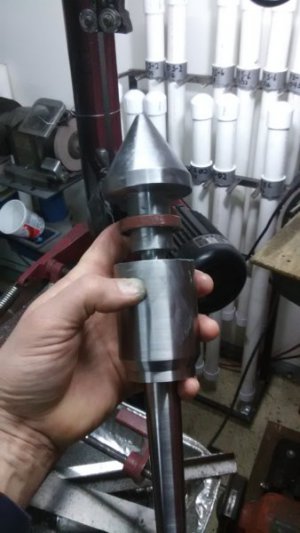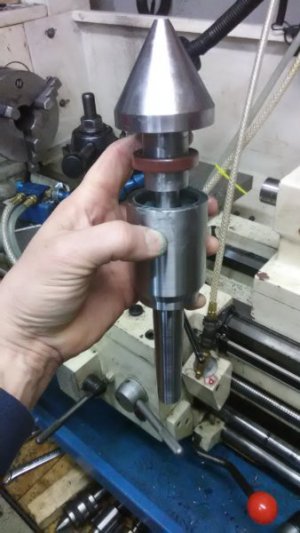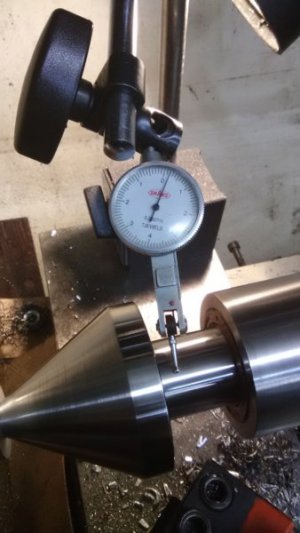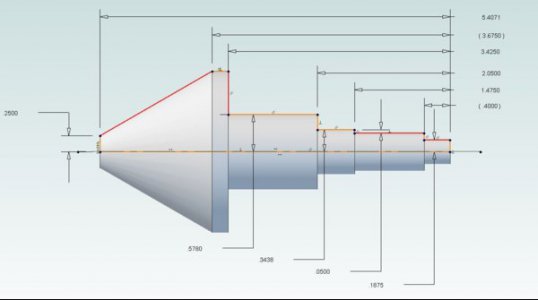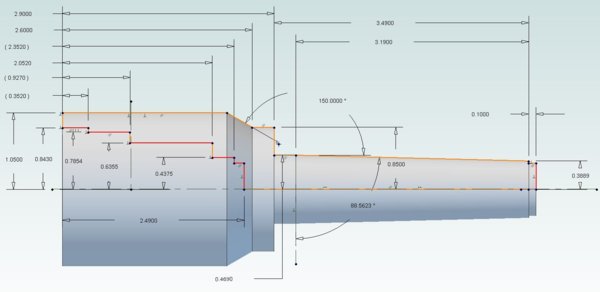Lots of pictures coming your way!
As expected, the Morse taper was a struggle. I've cut a bunch and each one kinda stinks in it's own special way. It all had a happy ending so here's a blow-by-blow pictogram...
Here's what it looked like after the raw cut. The same drill attachment was used to drive the compound. Two passes were required and as you can see, I started pretty far back (to give myself room to make corrections) in case something went south. The hard part is keeping even trigger pressure on the electric drill to keep the cut moving. I was not too pleased with the outcome but decided to take it and run. It's got some ridges. Yuk!
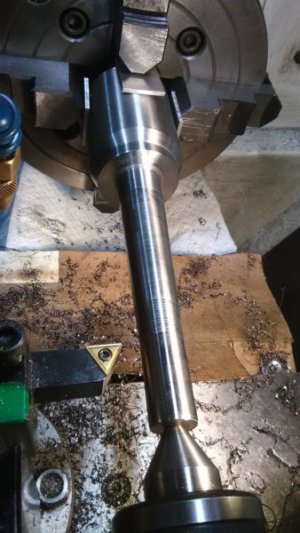
Next steps were to take a flat file, grinding compound and Dykem to locate the high spots and remove them. From start to finish, it took about 20 minutes to complete the task. I can honestly say, I do not have this process down to a cookbook procedure. The last couple times I've done this, I used a flat file. This is the first time I tried grinding compound and it worked very well and made the work much quicker. Also, this was not a messy ordeal and I was not concerned about grit getting everywhere. It was all very localized and of-course, the ways were carefully (safely) covered.
NOTE: When you take a file near a spinning chuck, you must have a handle on the file point and you must be aware of how close your arm is getting to the chuck. No loose clothing. Keep a sharp and clear mind when you do these things.
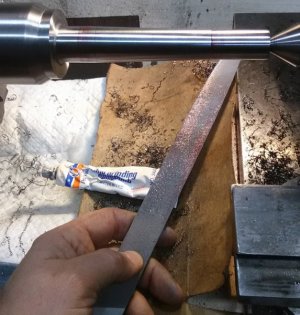
First, cover the part with dykem then, use the flattest edge you can find and press it to the rotating part. Upon doing that, the high spots are easily seen and addressed with the file and grinding compound. A 3 or 4" long HSS tool blank was used as a flat surface to scrape the dykem. It makes a pretty good edge. For filing, only use medium to light pressure and of course, a file is only worked one way. I opted to have the chuck spin forward and press down on the the top of the part. As a safety, sometimes when I need to touch a file to a part, I reverse the chuck and go from the bottom side. This is less likely to get you wrapped around your chuck.
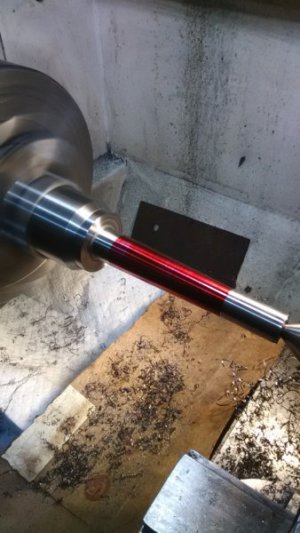
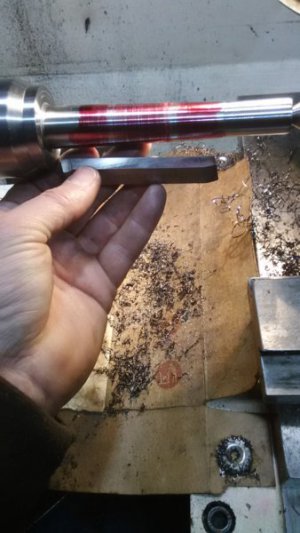
It did not take long to clean up. The valve grinding compound seemed to automatically hit the high spots and leave the low spots alone. I wrapped some emery around the tool blank and started to polish once I felt all the big ridges were gone. The edge of the tool blank is fairly sharp and it scraped all the dykem off leaving only tiny ridges that I can live with.
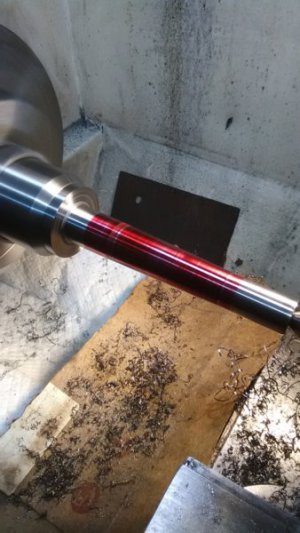
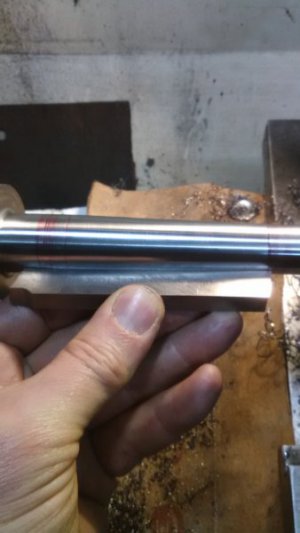
Some close-ups as we got close to the end. Once again, this is the first time I tried grinding paste and it worked very well. Only 20, maybe 25 minutes of messing with it after the initial lathe cut. If anybody else has ways to improve this, I'm all ears.
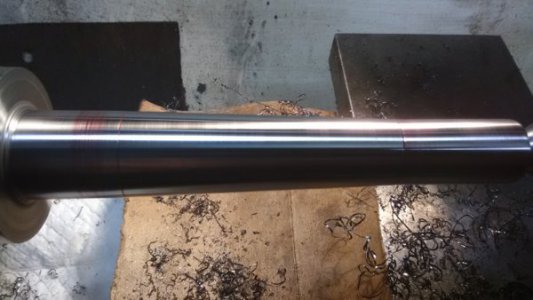
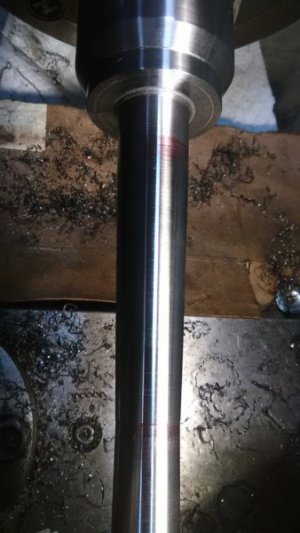
A final check with the TDI shows that it came out pretty good. The angle was preserved very well and the jiggling in the needle was very slight. Not as good as store-bought high production parts but, given what we're trying to pull-off with basic equipment, we can take this to the bank.
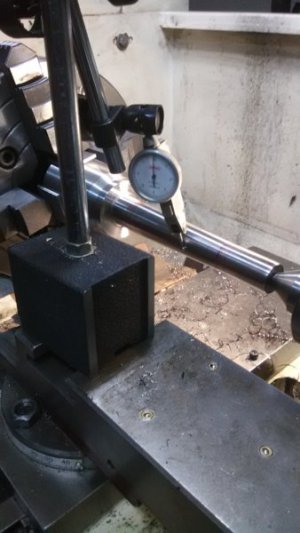
Lunch time!
Ray C.










